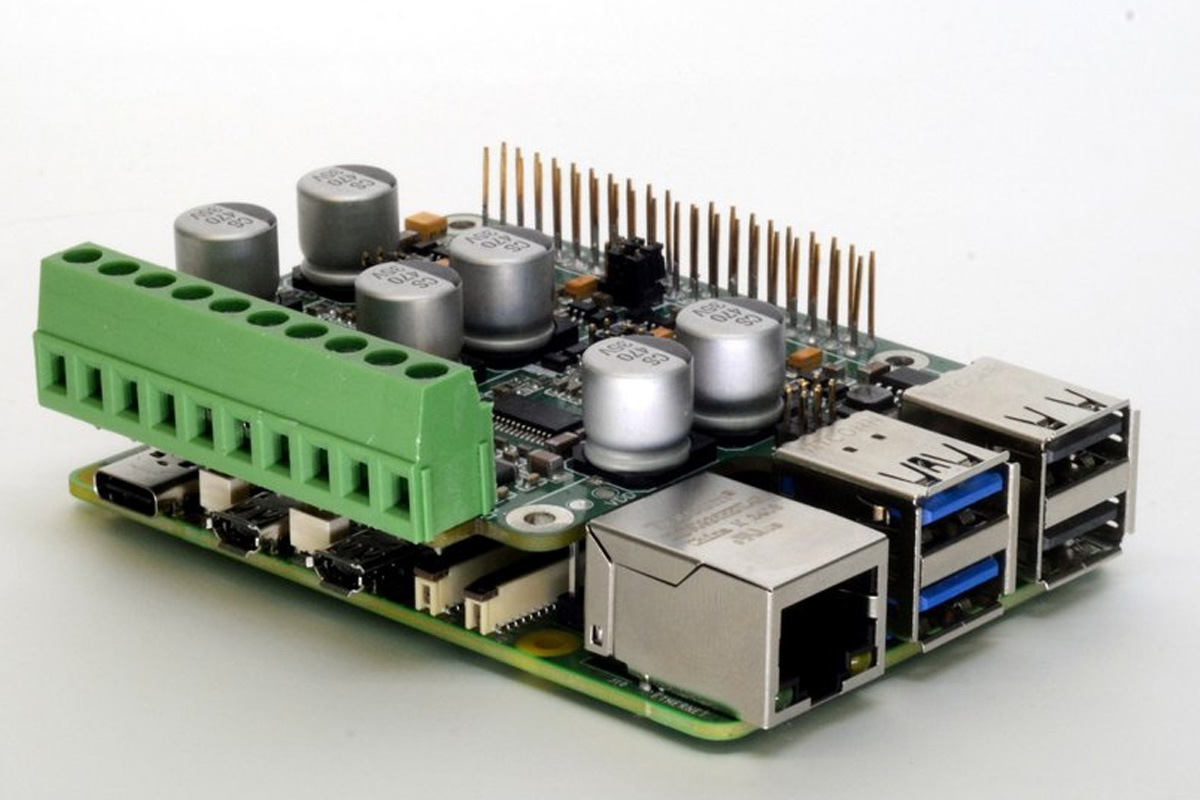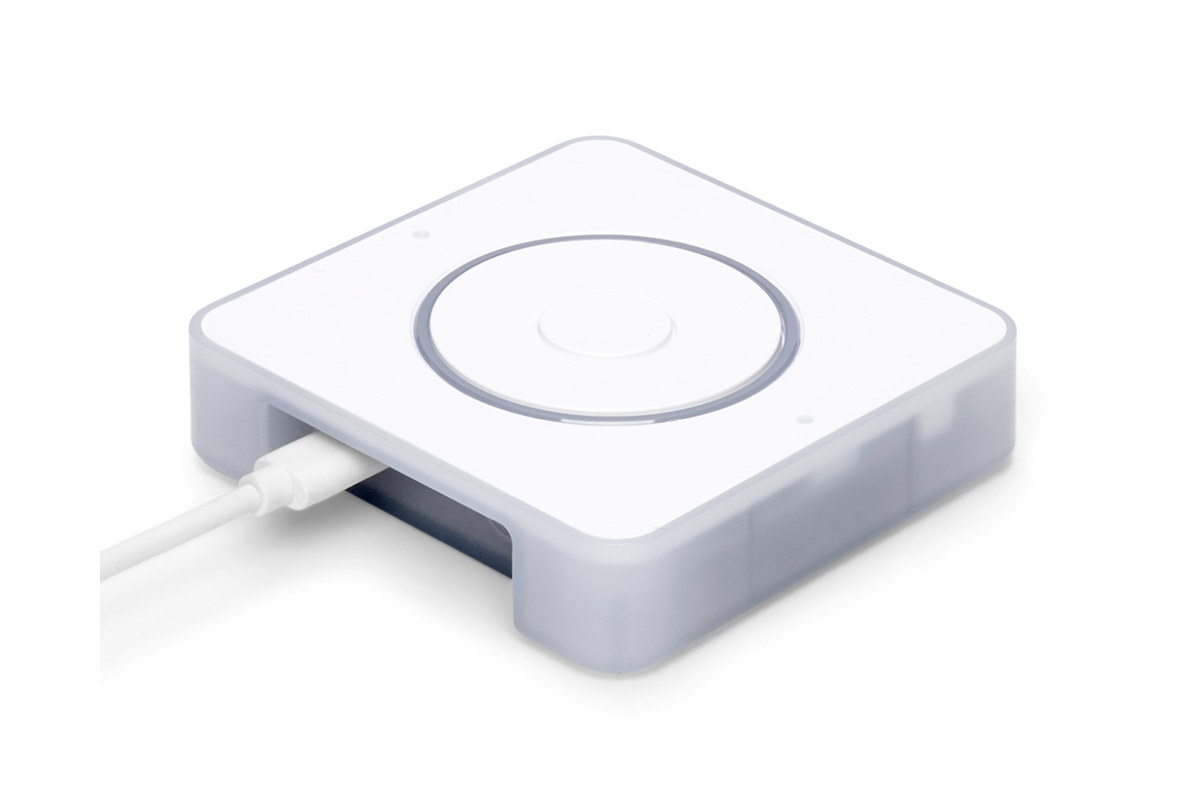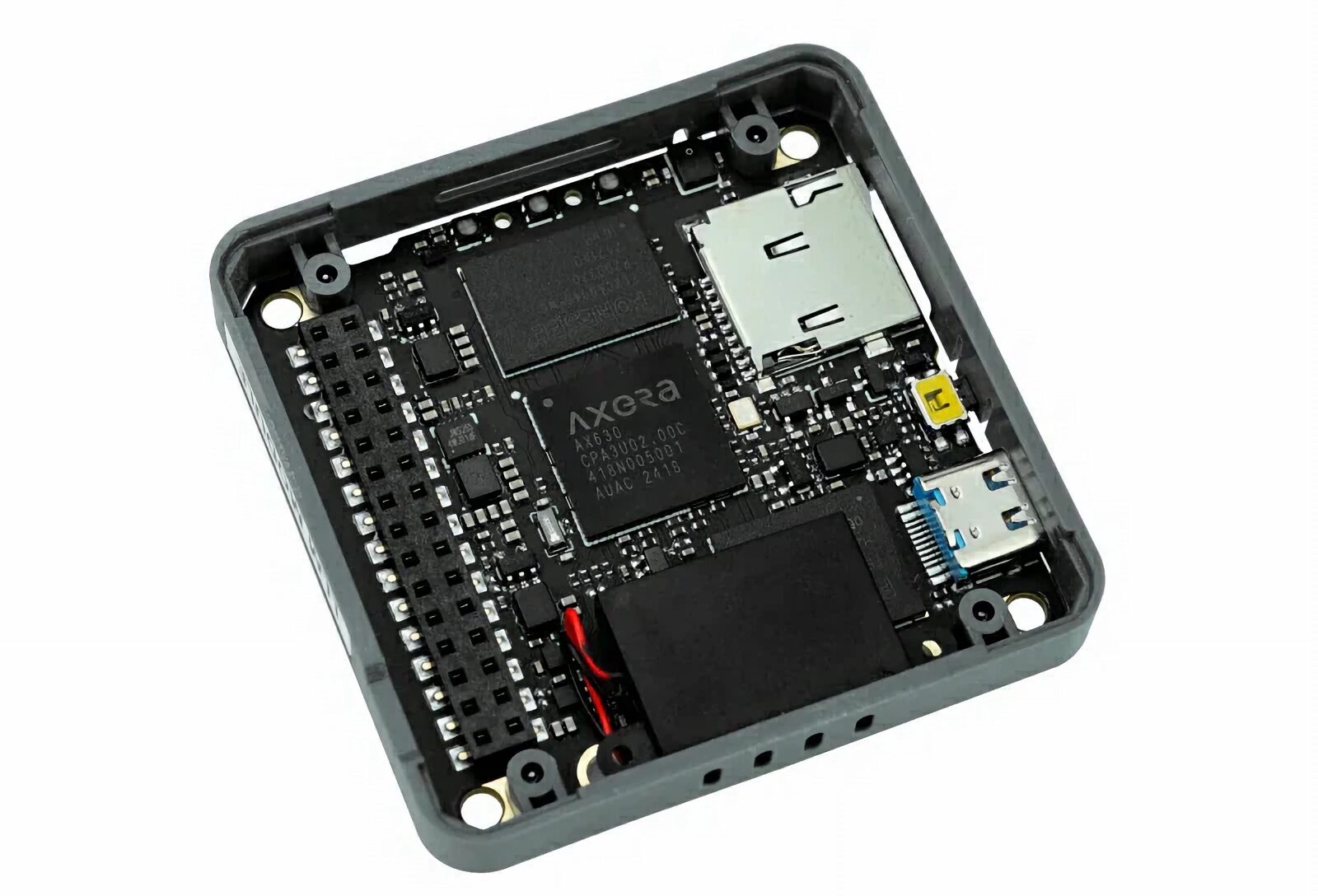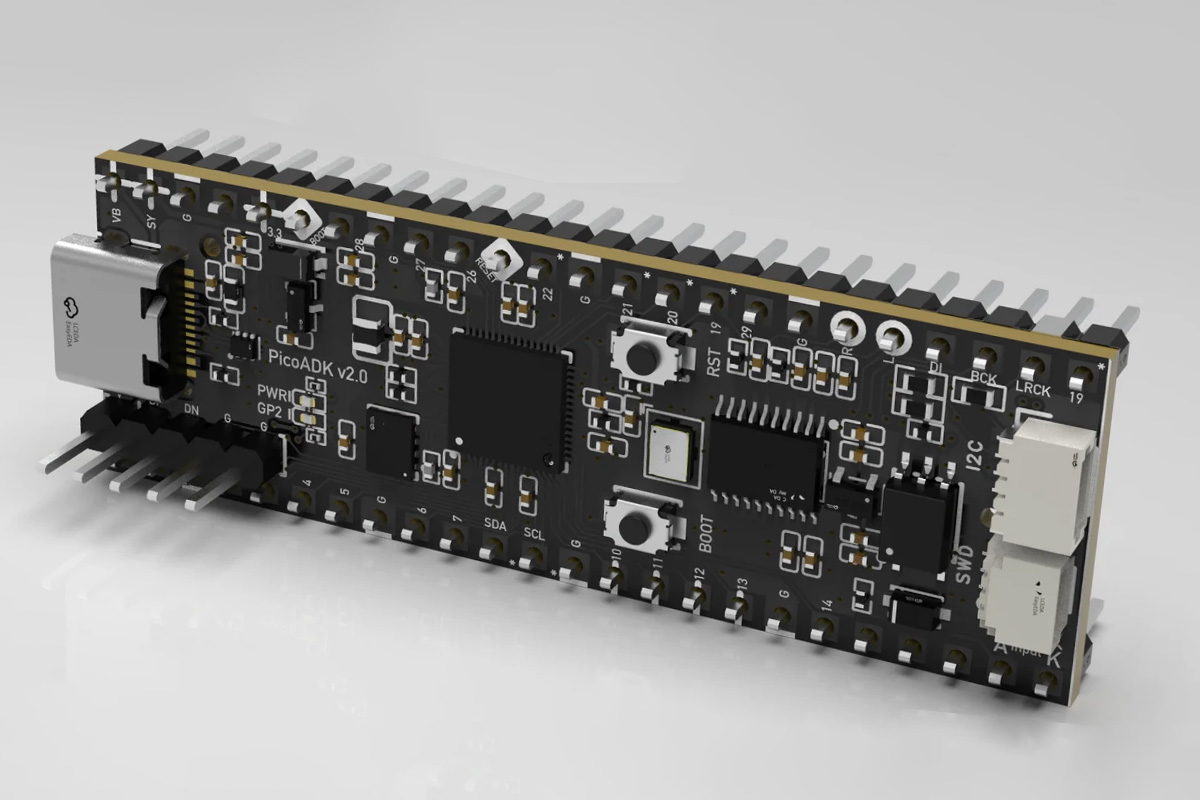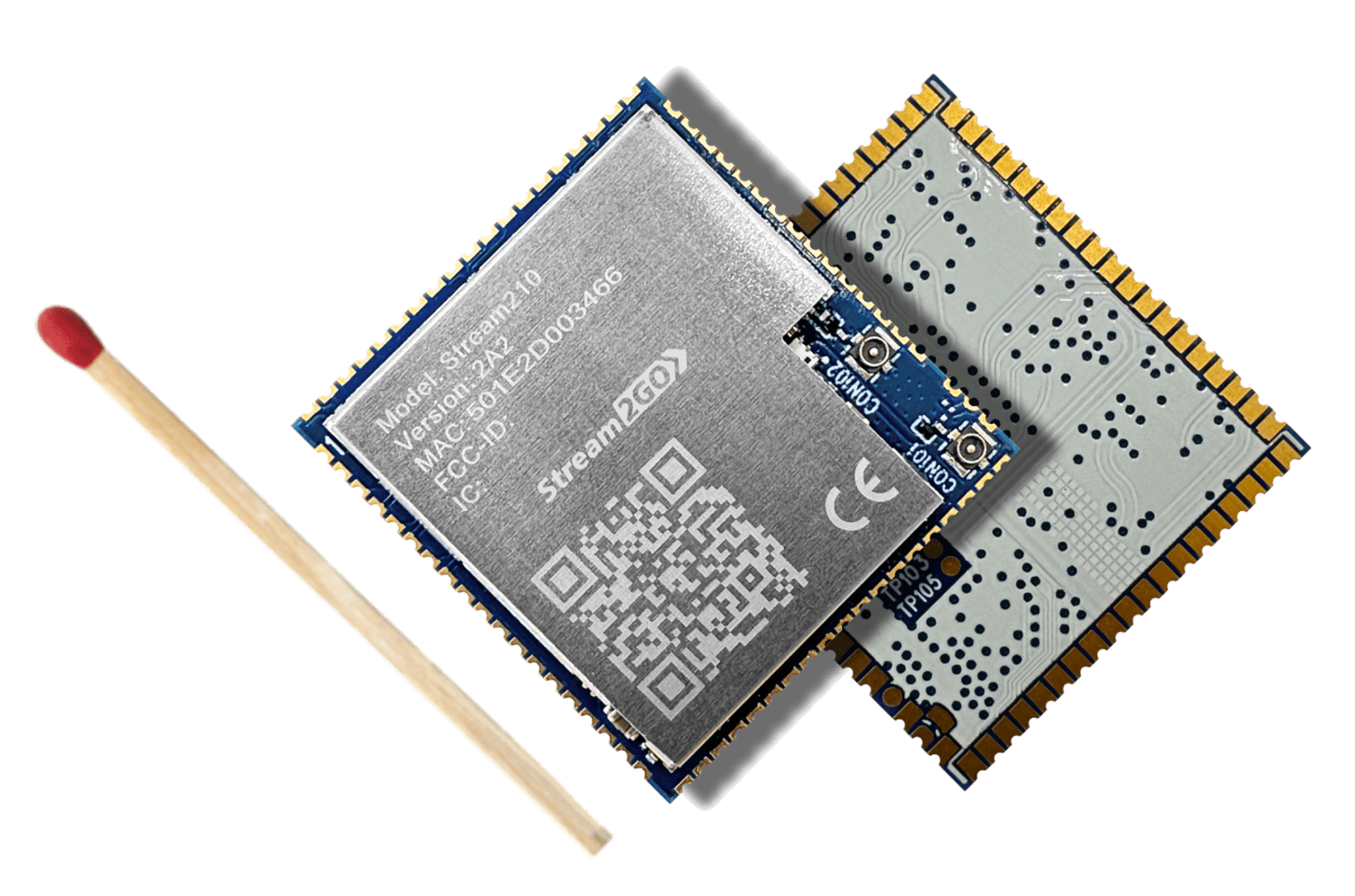Sonocotta’s HiFi-Amped is a Raspberry Pi Audio HAT designed for Raspberry Pi single-board computers. It features dual PCM5100 DACs and TPA3110 (2x15W @ 8-Ω or 1x 30-W @ 4-Ω) class D amplifiers for high sound quality and power efficiency. Key features of this module include support for both small and large speakers, an external power source to drive speakers and power the Raspberry Pi, and the ability to shut down the amplifiers using GPIO pins for minimal noise when not in use. This makes it ideal for creating a Raspberry Pi-based media center or audio streaming setup. HiFi-Amped specifications: Compatibility – Raspberry Pi 2, 3, 4, 5, Zero, and potentially others with a Raspberry Pi-compatible GPIO header Amplifier – 2x Texas Instruments TPA3110D2 Class-D amplifiers Output Power 4x 10W into 8 ohms @ 13V 4x 15W into 8 ohms @ 16V 2x 30W into 4 ohms @ 16V (bridged mode) […]
$59 Voice “Preview Edition” adds an offline smart speaker to your Home Assistant server
Nabu Casa has just launched the Home Assistant Voice Preview Edition, a little ESP32 device with an XMOS XU316 audio processor, a dual-microphone array, an internal speaker, and a 3.5mm audio jack, that adds offline smart speaker functions to your Home Assistant server through WiFi. If your Home Assistant server is powerful enough, voice processing will be done directly on your local hardware using Home Assistant Voice software, but with lower-end hardware like a Raspberry Pi 4, audio processing can be done via a privacy-focused cloud instead. The solution also supports expansion thanks to a Grove connector on the bottom of the device. Voice Preview Edition specifications: SoC – Espressif ESP32-S3 dual-core Xtensa LX7 @ up to 240 MHz with vector extension for ML acceleration, 2.4 GHz WiFi & Bluetooth 5.0 LE connectivity Memory- 8 MB octal PSRAM Storage – 16 MB flash Audio DSP/Processor – XMOS XU316 with 16 […]
LILYGO T-Bao tiny AI robot combines ESP32 and Kendryte K210 RISC-V chip, features camera and display
The T-Bao AI robot is a compact embedded device/robot that combines an ESP32 and a K210 RISC-V microcontroller and can perform face recognition and robotics applications. This compact device features a 1.54-inch 240×240 capacitive touch screen, a 2MP OV2640 camera, a MAX98357A I2S audio amplifier, a DRV8833 motor driver, an MPU6050 6-axis motion sensor, and an AXP202 PMU for power management. Additionally, it supports USB charging, offers LEGO blocks compatibility, and can move around with integrated caster wheels. These features make it usable for educational projects, robotics, IoT applications, and embedded systems prototyping. LILYGO T-Bao specifications SoCs Kendryte K210 dual-core 64-bit RISC-V processor @ 400 MHz with 8MB on-chip RAM, various low-power AI accelerators delivering up to 0.5 TOPS ESP32-D0WDQ6-V3 dual-core Xtensa LX6 processor, 240 MHz, 16MB Flash, 8MB PSRAM Display – 1.54-inch capacitive touch LCD (240×240) Camera – 2MP OV2640 with rolling shutter, UXGA (1600 x 1200) resolution, 180-degree […]
SoundSlide capacitive touch USB-C adapter aims to ease volume control on laptops
SoundSlide is an open-source hardware USB-C adapter that adds a capacitive touch interface to your laptop or keyboard PC in order to control the volume without having to reach out to the volume keys on the keyboard that may require Alt or Fn presses. SoundSlide is meant to be more intuitive than pressing keys and works without drivers with macOS, Windows, and Linux. At just 20.9 x 6.9 x 3.5 mm in size excluding the USB Type-C port, you can leave it connected to your laptop when you move around or put the laptop in your backpack. The SoundSlide relies on the touch interface from the Microchip SAM D11 Arm Cortex-M0+ microcontroller, and the company behind the project – Drake Labs – has made the firmware, schematics (PDF/WebP), and a command-line interface written on Go available on GitHub. You can check out how it works on a laptop in the […]
Black Friday and Cyber Monday 2024 – International deals and coupons
While Black Friday and Cyber Monday used to be a US-only event, it changed many years ago, and we’ve been writing about international Black Friday and Cyber Monday deals and coupon codes since 2014, since a large portion of our audience cannot benefit from promotions on Amazon’s Black Friday and Cyber Monday events that will take place from November 21 until December 2 this year. So I’ve gathered some international Black Friday and Cyber Monday 2024 deals and discount coupon codes from relevant manufacturers and popular online stores such as Aliexpress, Banggood, and others. Aliexpress Black Friday and Cyber Monday event Aliexpress’ Black Friday and Cyber Monday 2024 event has already started. There are three periods: Nov 19-21 PST – Warm Up event where users can find and add items to the cart before purchasing during the main event. Nov 22-30 PST – “On Sale” event with discounts up to […]
M5Stack releases AX630C-powered offline “Module LLM” for local smart home and AI applications
The M5Stack Module LLM is yet another box-shaped device from the company that provides artificially intelligent control without internet access. It is described as an “integrated offline Large Language Model (LLM) inference module” which can be used to implement local LLM-based solutions in smart homes, voice assistants, and industrial control. Module LLM is powered by the AX630C SoC, equipped with 4GB LPDDR4 memory, 32GB storage, and a 3.2 TOPS (INT8) or 12.8 TOPS (INT4) NPU. M5Stack says the main chip has an average runtime power consumption of 1.5W, making it suitable for long-term operation. It has a built-in microphone, speaker, microSD card slot, and USB OTG. The USB port can connect peripherals such as cameras and debuggers, and the microSD card slot supports cold and hot firmware updates. The M5Stack Module LLM joins the list of other offline, on-device LLM-based solutions, such as the SenseCAP Watcher, Useful Sensors’ AI in […]
Datanoise PicoADK v2 music synthesizer is a Raspberry Pi RP2350 board for audio experimentation
After the success of PicoADK v1, Datanoise has recently announced the launch of its PicoADK v2 music synthesizer built around the Raspberry Pi RP2350 MCU. The board supports projects like custom synthesizers, audio effects, and noise generation, and the 8 MB QSPI PSRAM of the RP2350 makes it ideal for memory-intensive applications such as long delays. Additionally, it features a SWD debug port, microSD card support, a MIDI-in circuit with an optocoupler, USB Type-C, user and power LEDs, and more. Previously, we have written about various similar synthesizer boards, like the Arduino-based MIDI controller, and we have seen products like the TinyLlama x86 retro computer, which uses the Raspberry Pi Zero 2 W as a MIDI synthesizer. PicoADK v2 music synthesizer specification Microcontroller – Raspberry Pi RP2350A MCU CPU – Dual-core Arm Cortex-M33 processor @ 150MHz Memory – 520KB internal RAM Storage – 8KB OTP Package – QFN-60; 7×7 mm Memory – Optional 8MB QSPI […]
Realtek Ameba RTL8730E Cortex-A32 audio streaming module offers a cost-effective solution for wireless audio applications
StreamUnlimited and Realtek Semiconductor Corp have collaborated on the Stream210 audio streaming module based on the Ameba Smart RTL8730E Arm Cortex-A32 chip from the Ameba E series, with support for Wi-Fi 6, Bluetooth 5.3, and Matter for edge computing and IoT solutions. We have looked at previous Ameba IoT products, such as the Ameba RTL8722DM development board, Ameba Arduino, Ameba RTL8195AM module, and the Ameba RTL8710BN. The Ameba Smart chip is the first entry in the series to feature a Cortex-A32 processor. The Stream210 module is aimed at various audio and IoT applications, including digital radios, streaming audio receivers, wireless speakers, smart speakers, home automation products, and Wi-Fi headphones. Other wireless audio modules we’ve covered in the past include the Up2Stream Pro HiFi board, TTGO T9, and 8devices’ Tobufi module. Stream210 specifications: SoC – Ameba Smart RTL8730E dual-core Arm Cortex-A32 processor @ 1.3GHz Memory – 2Gbit RAM Storage – 2Gbit […]


